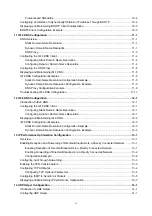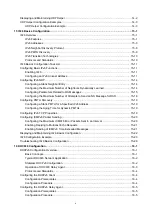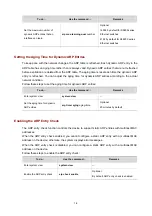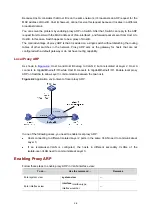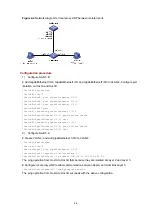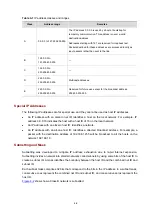
2-1
2
Proxy ARP Configuration
This chapter includes these sections:
z
z
z
Displaying and Maintaining Proxy ARP
Proxy ARP Overview
A host may send an ARP request for the MAC address of another host that is isolated from the
sending host at Layer 2. Alternatively, the sending and receiving hosts may reside on different
networks, but the sending host considers both of them are located on the same network. In both cases,
a device located in between must be able to respond with the MAC address of the receiving interface
to allow Layer 3 communication between the two hosts. This is achieved by proxy ARP, which hides
the physical details of the network.
Proxy ARP involves common proxy ARP and local proxy ARP, which are described in the following
sections.
The term proxy ARP in the following sections of this chapter refers to common proxy ARP unless
otherwise specified.
Proxy ARP
A proxy ARP-enabled device allows hosts that reside on different subnets to communicate.
As shown in
, the Switch connects to two subnets through Vlan-interface1 and
Vlan-interface2. The IP addresses of the two interfaces are 192.168.10.99/24 and 192.168.20.99/24.
Host A and Host B have the same prefix 192.168.0.0 assigned and connect to Vlan-interface1 and
Vlan-interface2, respectively.
Figure 2-1
Application environment of proxy ARP


